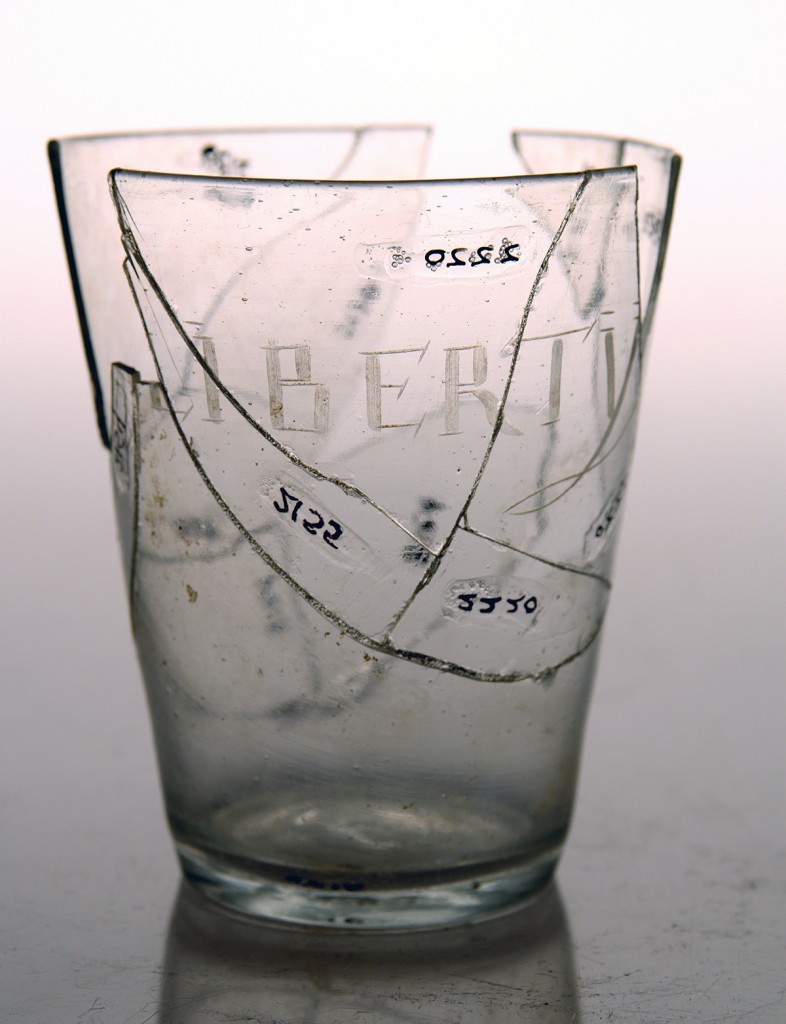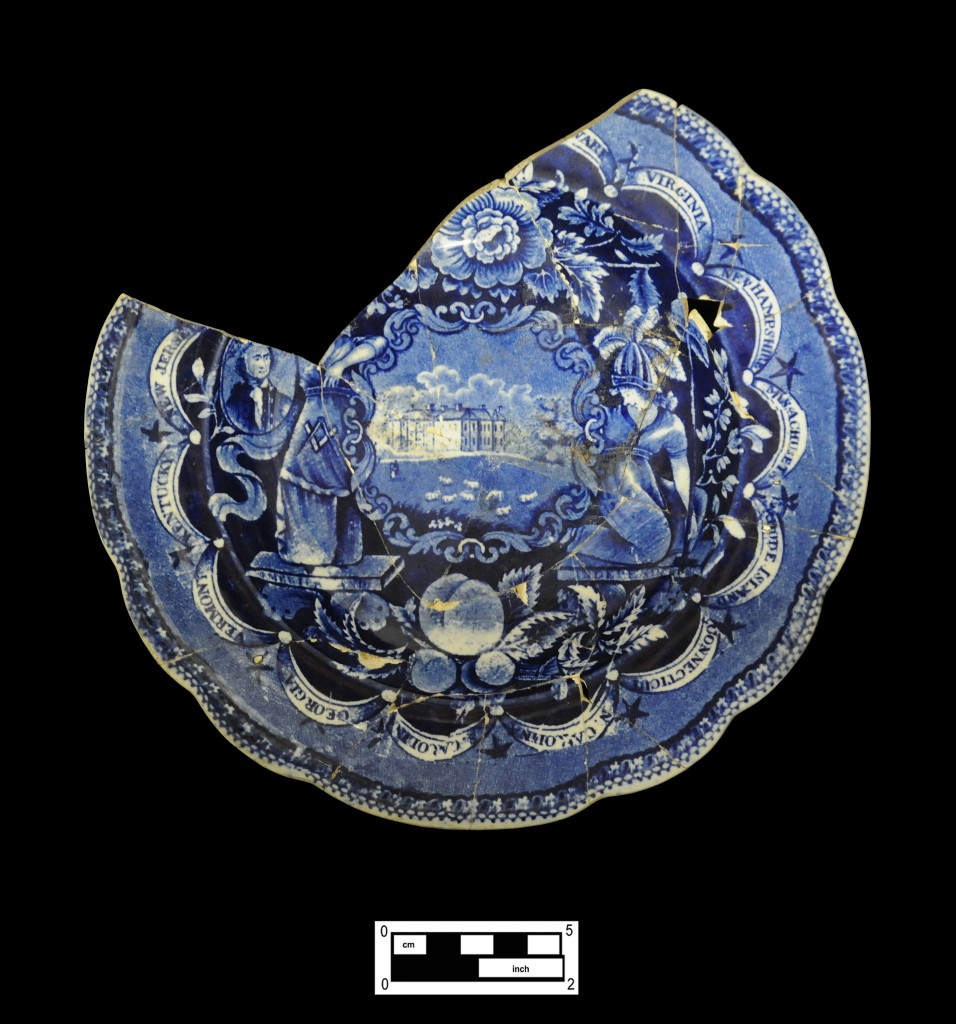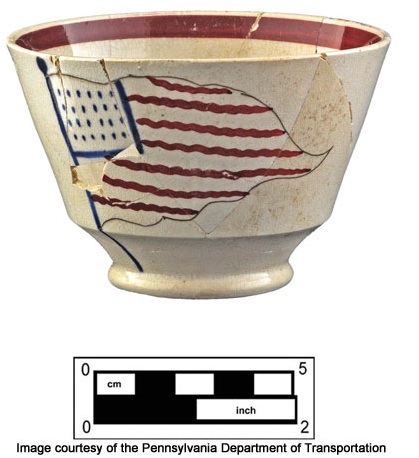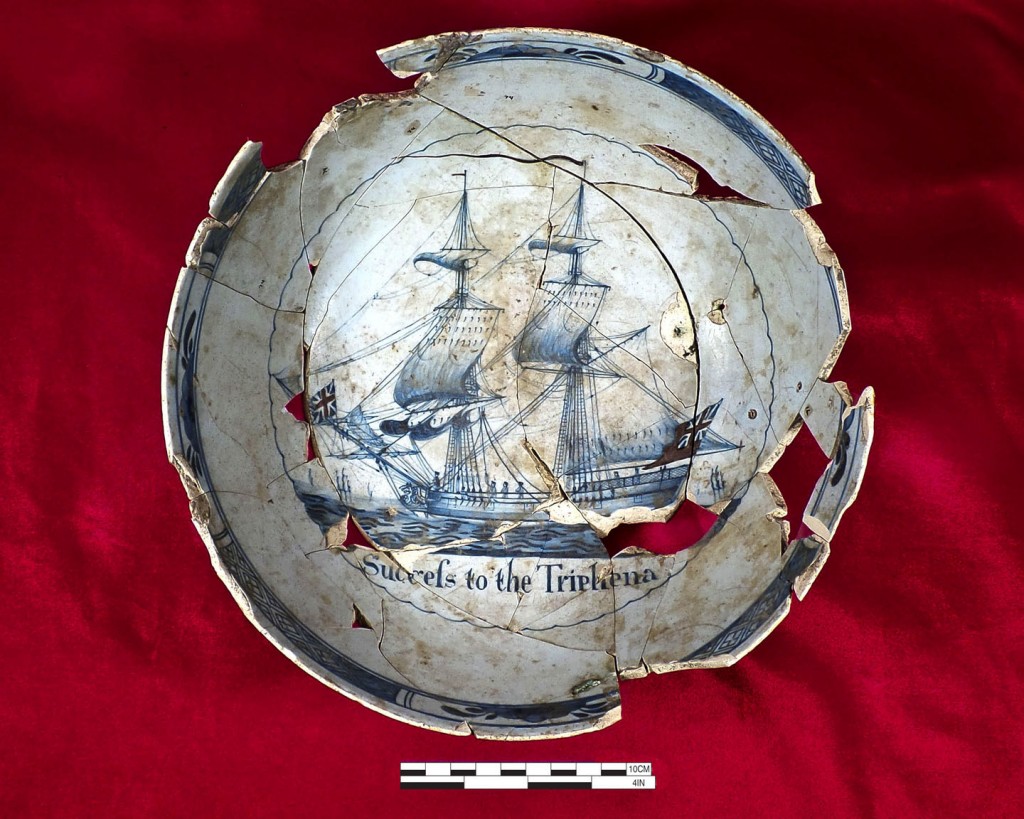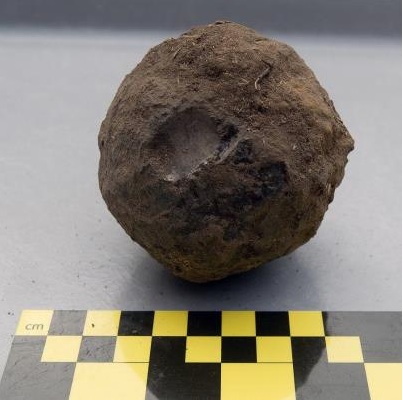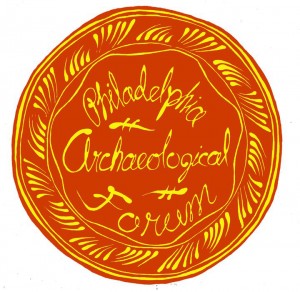Artifacts of American Democracy
To the Philadelphia Archaeological Forum Homepage
——–
ARTIFACTS OF AMERICAN DEMOCRACY
excavated from archaeology sites
in Philadelphia, Pennsylvania
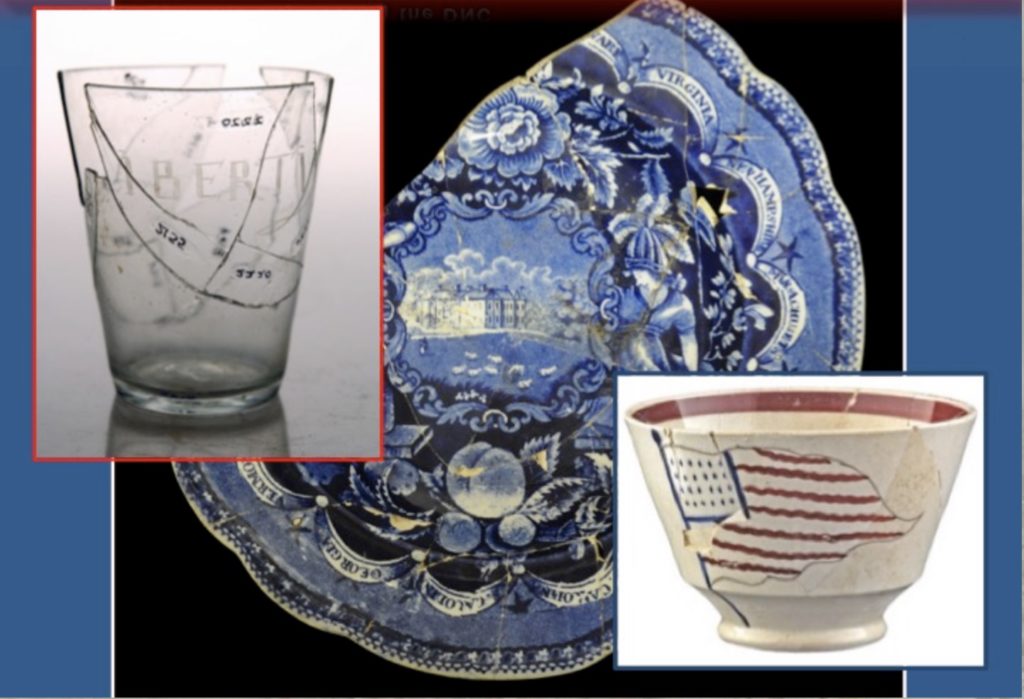

******************
The Liberty Tumbler
Excavated from a site in Independence Park, this artifact documents the role of politics in the late 18th century home, when the struggle for independence from England was a hotly contested issue. The owner of this glass was declaring their sympathy for the revolutionary cause. Learn more here…
********
Clews “States Border”/”America and Independence” Plate, ca. 1826-1834
Recovered during archaeological excavations along I-95 in the Fishtown neighborhood of Philadelphia (just North of the Benjamin Franklin Bridge), this 8.75” diameter soup plate was probably designed to commemorate the 50th anniversary of the signing of the Declaration of Independence in 1826. Learn more here…
*******
Teacup Celebrating the 50th Anniversary of the Signing of the Declaration of Independence
This tea cup decorated with an American flag bearing 24 stars was found in the Fishtown neighborhood of Philadelphia by archaeologists working on a Pennsylvania Department of Transportation highway project. It speaks to the sentiments of a local waterfront homeowner living in Philadelphia nearly 200 years ago. The 24-star flag served as a national symbol between the years 1822 and 1836, during the presidencies of James Monroe (1817-1825), John Quincy Adams (1825-1829), and Andrew Jackson (1829-1837). Learn more here…
******
Early Philadelphia Political Graffiti
This graffiti references a Roman quote about individual liberty versus government tyranny and the lack of morality in politics. The quote influenced the American colonists and resonated within the Republican cause. This pane of glass etched with the quote was discovered at the site of tavern that once operated near 3rd and Chestnut Streets (at the location of the forthcoming Museum of the American Revolution). The significance of this quote to the Philadelphian who scratched it on the window pane provides a glimpse into the lively tavern culture of the day. Learn more here…
*******
The ‘Triphena’ Bowl
This bowl bears an image of a merchant ship that traveled the Atlantic Ocean between Philadelphia, England, and the West Indies over a fifty-year period, from roughly 1765 to 1817. In late 1765, the captain of the Triphena carried a notice from the merchants and traders of Philadelphia addressed to the merchants and manufacturers of Great Britain, asking them to pressure Parliament to repeal the Stamp Act. Read more here…
******
Betsy Ross’ Pitchers
Found in the bottom of a privy pit (outhouse) behind the house where Betsy Ross spent her last years, these pitchers bear images of two War of 1812 naval engagements in which the fledgling U. S. Navy was victorious over the mighty British Navy in the ‘Second War for Independence’. Learn more here…
******
Cannon Ball
This ’round of solid shot’, 2.9 inches in diameter, was discovered during the removal of a tree stump in Independence National Historical Park. The square around Independence Hall was used to store ordinance during the Revolutionary War, and the size of the shot was common both then (during the period circa 1775-76) and during the time of the War of 1812. Learn more here…
*******
Broken Sword from Revolutionary Philadelphia
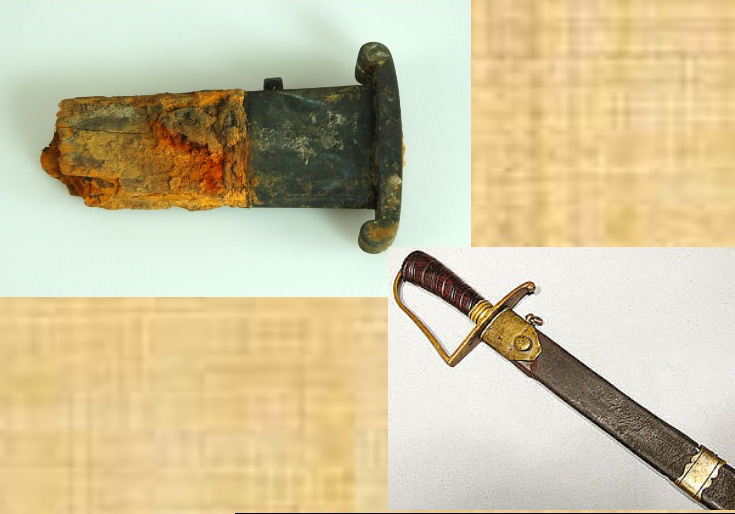
Archaeologists recovered this partial short sword alongside a number of other small arms during excavations conducted at the site of the National Constitution Center on Independence Mall. The 4.61 inch long sword is missing its grip and pommel and retains only the copper alloy cross guard, part of the wood core of the scabbard, and a segment of the iron blade.
____________________________
_______
See other artifacts excavated from Philadelphia at the PAF Artifact of the Month Index
The Philadelphia Archaeological Forum (PAF) is a non-profit organization dedicated to the protection and preservation of archaeological resources in the City of Philadelphia. Established in 1998, the organization aims to further an awareness of Philadelphia’s rich archaeological heritage through educational programs and activities which reach beyond the professional community. PAF also advises agencies and the general public on archaeological matters and encourages communication about, and support for, the publication of information concerning the archaeology of the city. PAF Membership Is Open to Everyone. Learn about PAF here…
Page content collated by Patrice L. Jeppson, Ph.D., July 25-28, 2016, Updated July 3, 2018.
by admin
